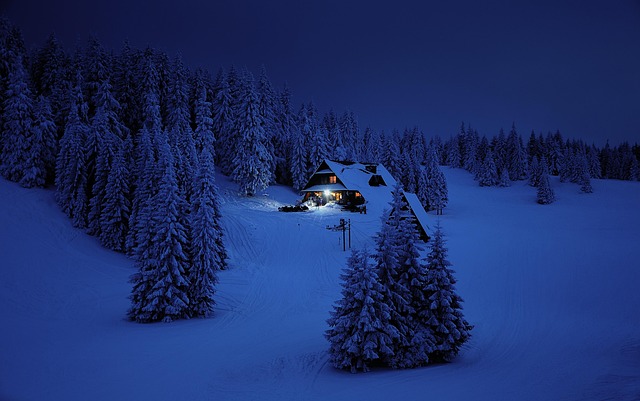Understanding driveway installation pricing involves considering project size, complexity, light type (e.g., LED vs incandescent), additional features like motion sensors or smart control systems, material and labor expenses, local labor rates, accessibility, surface types (concrete, asphalt, stone), and future maintenance costs. Researching local contractors, breaking down costs by category, and opting for energy-efficient LED lights can help create a realistic financial plan for driveway lighting installations.
“In today’s illuminated landscape, outdoor lighting installations enhance properties and safety. Yet, understanding the costs behind these projects can be a challenge. This article serves as your guide through the intricacies of estimating driveway installation pricing. We’ll delve into the key factors shaping these expenses, from material and labor to additional considerations. By exploring these aspects in detail, homeowners and professionals alike can ensure accurate budgeting and successful outdoor lighting projects.”
Understanding Outdoor Lighting Installation Costs
Understanding Outdoor Lighting Installation Costs
When it comes to outdoor lighting installations, there are several factors that influence the overall cost. The most straightforward component is often the driveway installation pricing, which can vary based on the size and complexity of your property. Larger or more intricate designs will typically command a higher price tag due to increased materials and labor requirements. Additionally, the type of lights chosen plays a significant role; LED lighting, for instance, is generally more cost-effective in the long run compared to traditional incandescent bulbs.
Other considerations include the number of fixtures needed, their placement, and any additional features such as motion sensors or smart control systems. These extras can significantly impact driveway installation pricing, but they also offer benefits like enhanced security and energy efficiency. Understanding these variables allows property owners to budget effectively and make informed decisions when planning outdoor lighting upgrades.
Factors Influencing Driveway Installation Pricing
The cost of a driveway installation can vary greatly, with several factors influencing the final price tag. One of the primary considerations is the size and complexity of the project. Larger driveways or those with intricate designs requiring custom features will command higher costs due to increased material and labor requirements. The type of lighting fixtures chosen also plays a significant role in driveway installation pricing. Energy-efficient LED lights, for instance, are more expensive upfront but offer long-term savings and better durability compared to traditional incandescent bulbs.
Another crucial factor is accessibility and site preparation. Difficult terrain, tight spaces, or challenging weather conditions during the installation process can add to the overall cost. Additionally, the price may vary depending on the type of driveway surface selected, with concrete, asphalt, or stone options each having distinct pricing ranges based on materials, labor, and finish choices. Driveway installation pricing also considers factors like additional features such as sensors, timers, or smart home integrations, which can significantly enhance functionality but come at an extra cost.
Estimating Material and Labor Expenses
When estimating costs for outdoor lighting installations, understanding material and labor expenses is crucial. The driveway installation pricing can vary widely depending on several factors such as the size and complexity of the project, the type of lights chosen, and local labor rates. Material costs include fixtures, wiring, cables, and any additional components required to complete the job. For a more accurate estimate, break down these costs by category: light fixtures (which can range from simple post lights to elaborate hanging lamps), electrical components, and any necessary tools or accessories.
Labor expenses are also significant. Professional installers typically charge based on an hourly rate or a flat fee per project. Consider factors like accessibility of the site, depth of installation required, and any additional tasks such as landscape integration or custom design work. These elements can influence both labor time and overall driveway installation pricing. Research local contractors to get a sense of typical rates for outdoor lighting installations, ensuring you receive a competitive quote tailored to your specific needs.
Additional Considerations for Accurate Budgeting
When estimating costs for outdoor lighting installations, it’s crucial to consider factors beyond the initial fixture and bulb expenses. Driveway installation pricing, for instance, can vary significantly based on the length and complexity of your driveway, as well as the type of lighting chosen. A thorough assessment of these additional variables ensures a more accurate budget.
Other considerations include maintenance costs, which can be substantial over time. The frequency of bulb replacement, cleaning, and repair work should be factored in. Additionally, energy consumption plays a significant role; choosing energy-efficient LED lights can help reduce long-term expenses. Understanding these nuances is essential for creating a realistic budget and ensuring your outdoor lighting project stays on track financially.
When estimating costs for outdoor lighting installations, particularly driveway installations, it’s crucial to consider both material and labor expenses. By understanding the various factors influencing pricing, such as project size, complexity, and location, homeowners can ensure accurate budgeting. Additionally, accounting for potential additional costs associated with permits, electrical work, and equipment rental is essential for a seamless and well-lit outdoor space. Remember that knowledge is power when it comes to driveway installation pricing – the more informed you are, the better equipped to make informed decisions about your outdoor lighting investment.
